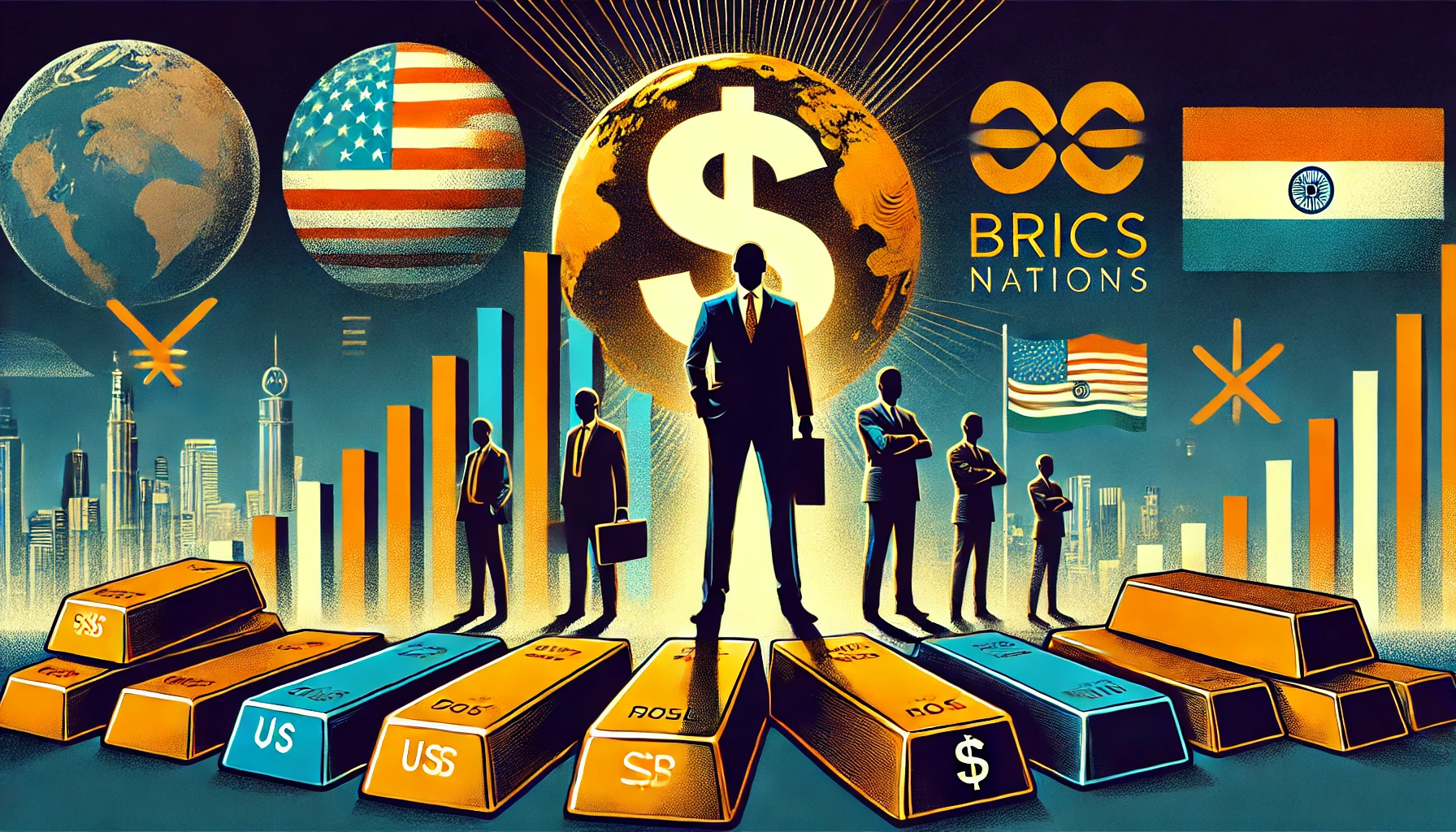Tariff Threat: In a fiery and characteristically blunt late-night tweet, former President Donald Trump announced his intention to impose a 100% tariff on BRICS countries should they adopt an alternative currency for trade. His words, dripping with arrogance and fear, laid bare a growing anxiety in the United States: the potential erosion of the U.S. dollar’s status as the world’s reserve currency.

Why Is the Dollar’s Dominance in Question?
The U.S. dollar has long been the cornerstone of global trade, finance, and reserves, giving the United States unparalleled influence over international markets. However, recent geopolitical developments have shaken this dominance. The key catalyst? The U.S.’s controversial decision to freeze $400 billion of Russia’s reserves in response to the Ukraine war.
- Freezing Russia’s Reserves:
This unprecedented move by the U.S. demonstrated its ability to weaponize the global financial system. While effective as a punitive measure, it sent shockwaves through nations that rely on the dollar. Many countries now fear that their reserves could similarly be frozen or confiscated if they cross paths with U.S. policies. - Reallocating Russian Reserves to Ukraine:
The U.S. went a step further by redirecting portions of these frozen funds to support Ukraine. While this may have been a moral stance for some, it raised alarms globally about the safety of holding reserves in dollars, as it underscored the U.S.’s unilateral power to control and redistribute wealth. - BRICS and Alternative Currencies:
The BRICS bloc—Brazil, Russia, India, China, and South Africa—has been vocal about reducing dependency on the dollar. Discussions about a BRICS alternative currency, likely backed by commodities or gold, have gained traction, signaling a shift towards a multipolar financial system.

India’s UPI: Challenging SWIFT and Dollar Dependency
Amid this global financial rebalancing, India has been quietly revolutionizing cross-border payments with its Unified Payments Interface (UPI). Launched in 2016, UPI has already transformed digital payments in India, and now it is being positioned as a viable alternative to SWIFT, the dominant international payment messaging system.
Why UPI Matters:
- Domestic Success: UPI has processed billions of transactions domestically, providing a fast, secure, and seamless payment experience without revealing bank details. Its scalability and efficiency have drawn international attention.
- International Expansion: Countries like Singapore, UAE, Bhutan, Nepal, France, Sri Lanka, and Mauritius have adopted or integrated UPI into their payment systems. UPI’s presence is growing rapidly, with ongoing discussions in regions like Africa and South America.
- Reducing Dollar Dependency: By promoting bilateral payment agreements using UPI, India is enabling countries to bypass dollar-based transactions. For example, Indian tourists in UAE and Singapore can directly use UPI for payments, avoiding conversion to dollars.
- Gold Over Dollar: India’s digital push with UPI complements the trend of countries increasing gold reserves and reducing dollar holdings, further undermining the dollar’s dominance.
UPI’s Potential Against SWIFT:
- Unlike SWIFT, which primarily facilitates interbank communication for international transfers, UPI provides real-time payment capabilities that can be used across borders.
- UPI’s efficiency and cost-effectiveness make it attractive to countries looking to reduce dependency on dollar-based systems.

The Rise of Gold: A Hedge Against Dollar Risk
As nations rethink their reliance on the dollar, gold has emerged as a popular alternative. Countries like China and India have been steadily increasing their gold reserves while selling off dollar holdings. Here’s why:

- Gold’s Stability: Unlike fiat currencies, gold is not subject to the policies of any one nation, making it a safer store of value during times of geopolitical uncertainty.
- Diversification: By moving to gold, countries are spreading their risk, ensuring they are less vulnerable to financial sanctions or economic coercion.
- De-dollarization Trend: Countries like Saudi Arabia have started pricing oil in non-dollar currencies, a development that could drastically reduce the dollar’s role in global trade.
Trump’s 100% Tariff Threat: Fear or Strategy?
Trump’s proposed 100% tariff on BRICS countries using an alternative currency is a desperate attempt to defend the dollar’s supremacy. However, such a move could backfire:
- Economic Blowback: Tariffs would increase costs for American consumers and businesses, especially given the U.S.’s reliance on imports from countries like China, India, and Brazil.
- Further Alienation of BRICS: Instead of deterring alternative currencies, punitive measures could accelerate the de-dollarization trend by incentivizing countries to seek economic independence from the U.S.
- Global Perception: Trump’s tweet, while bold, may signal weakness rather than strength. The very act of threatening BRICS highlights the U.S.’s fear of losing its financial hegemony.
The Bigger Picture: A Multipolar Financial World
The dollar’s dominance has been a pillar of American economic power, but cracks are beginning to show. The BRICS nations, representing a significant portion of the world’s population and GDP, are actively challenging the status quo. While the U.S. still holds significant advantages, such as the size of its economy and the liquidity of its markets, the shift towards diversification is undeniable.
Conclusion: The End of Dollar Dominance?

Trump’s tweet reflects a growing realization in Washington: the world is no longer willing to accept unchallenged U.S. financial supremacy. The freezing of Russia’s reserves and the subsequent reallocation to Ukraine have exposed vulnerabilities in the dollar-centric system, pushing countries to explore alternatives.
India’s UPI system, with its rapid adoption by several countries, showcases how nations are innovating to reduce reliance on dollar-dominated systems like SWIFT. Combined with the rising preference for gold, this movement signals the beginning of a new financial order.
The de-dollarization movement is gaining momentum. While the dollar is unlikely to lose its reserve currency status overnight, its monopoly is under threat. The question now is not whether the global financial system will change, but how fast the transformation will occur—and whether the U.S. is prepared to adapt to a multipolar world